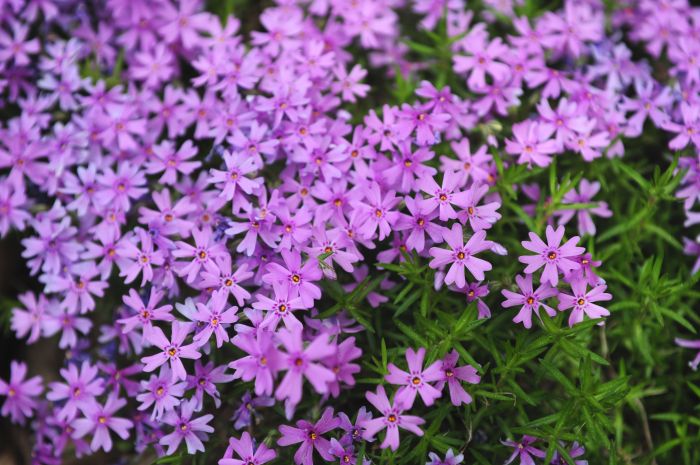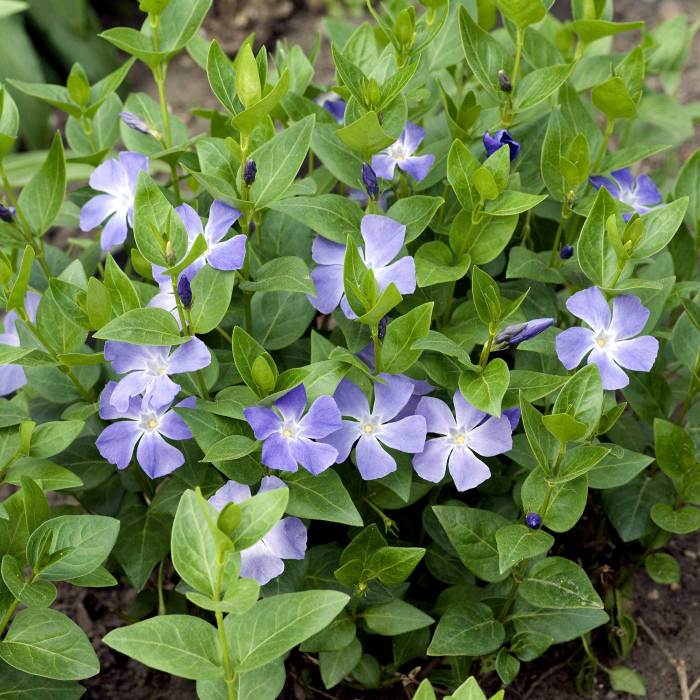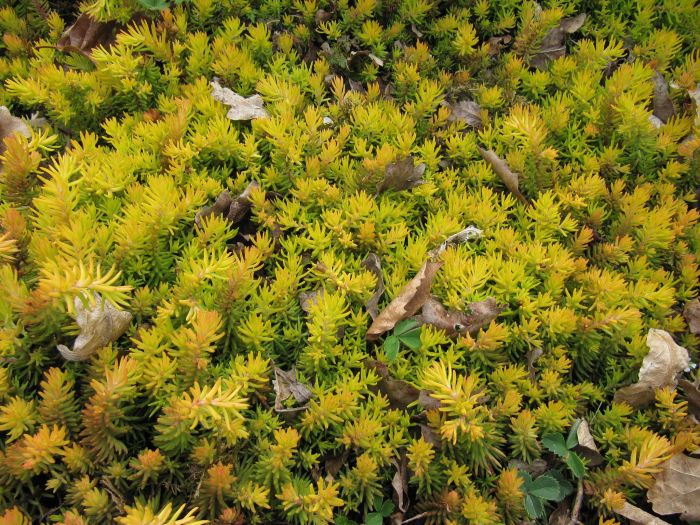Tired of battling pesky weeds in your garden? Plants to stop weeds offer a natural and effective way to reclaim your green space. Instead of relying on harsh chemicals, companion planting and strategic plant selection can create a thriving ecosystem where weeds struggle to survive.
This approach not only helps control weeds but also enriches your garden with biodiversity, attracting beneficial insects and enhancing overall plant health. From groundcovers to flowering perennials, a wide variety of plants possess weed-suppressing properties, making it possible to cultivate a beautiful and weed-free garden.
The Power of Plants in Weed Control

Weeds are a common problem for gardeners and landscapers, competing with desired plants for resources like sunlight, water, and nutrients. This competition can result in stunted growth, reduced yields, and even plant death. While chemical herbicides are often used to control weeds, they can have detrimental effects on the environment and human health.
A more sustainable and eco-friendly approach is to use plants themselves to suppress weeds.Plants can help control weeds in several ways. They can outcompete weeds for resources, create physical barriers, and even release chemicals that inhibit weed growth. One particularly effective strategy is companion planting, where different plant species are grown together to benefit from each other’s presence.
Companion Planting for Weed Suppression
Companion planting is a well-established practice that involves strategically choosing plants to grow near each other to enhance their growth and resilience. This practice leverages the natural interactions between different plant species, promoting beneficial relationships that can help control weeds.
- Shade Competition:Plants with dense foliage can shade out weeds, depriving them of sunlight and hindering their growth. For example, planting taller plants like sunflowers or corn alongside smaller vegetables can provide shade for the lower-growing plants while suppressing weeds in the area.
- Root Competition:Plants with extensive root systems can effectively compete with weeds for water and nutrients. For example, planting legumes like beans or peas with other vegetables can improve soil fertility while also outcompeting weeds for resources.
- Allelopathy:Some plants release chemicals into the soil that inhibit the growth of other plants, including weeds. For example, marigolds are known to release chemicals that deter nematodes and other pests, while also suppressing the growth of certain weeds.
“Companion planting is a valuable tool for organic gardeners, providing a natural and sustainable approach to weed control.”
Types of Plants for Weed Control

The use of plants to suppress weeds, known as suppressive mulching, is a natural and effective approach to weed control. This method involves using specific plants that can outcompete weeds for resources such as sunlight, water, and nutrients, thereby inhibiting their growth and establishment.
There are several types of plants that can be utilized for this purpose, each with unique characteristics and growth habits.
Groundcovers
Groundcovers are low-growing plants that spread horizontally, forming a dense mat that effectively smothers weeds. They are particularly useful in areas where mowing is difficult or undesirable. These plants thrive in various soil conditions and are often drought-tolerant.
- Creeping Thyme (Thymus serpyllum): This aromatic herb forms a dense, low-growing mat that effectively suppresses weeds. It thrives in full sun to partial shade and prefers well-drained soil.
- Periwinkle (Vinca minor): This evergreen groundcover features attractive, glossy leaves and beautiful blue or purple flowers. It tolerates shade and is adaptable to a range of soil types.
- Japanese Spurge (Pachysandra terminalis): This evergreen groundcover thrives in shade and prefers moist, well-drained soil. It forms a dense mat of foliage that effectively prevents weeds from growing.
Companion Plants, Plants to stop weeds
Companion plants are those that are planted together to benefit each other, often by repelling pests or attracting beneficial insects. Some companion plants also possess weed-suppressing properties.
- Marigolds (Tagetesspp.): These vibrant flowers are known to repel nematodes, a type of pest that can damage plant roots. Marigolds also release chemicals into the soil that can inhibit weed growth.
- Lavender (Lavandula angustifolia): This aromatic herb attracts beneficial insects that prey on garden pests. It also releases chemicals that can suppress weed growth.
- Garlic (Allium sativum): This pungent herb repels a wide range of pests, including aphids and slugs. Garlic also releases chemicals that can inhibit weed growth.
Cover Crops
Cover crops are plants grown primarily for soil improvement but can also suppress weeds. They are typically planted in the off-season to provide ground cover and prevent soil erosion.
- Buckwheat (Fagopyrum esculentum): This fast-growing cover crop effectively suppresses weeds and improves soil fertility. It is a good source of organic matter and can help to control soil-borne diseases.
- Hairy Vetch (Vicia villosa): This nitrogen-fixing cover crop can suppress weeds and improve soil fertility. It is also a good source of organic matter and can help to control soil-borne diseases.
- Ryegrass (Lolium perenne): This fast-growing cover crop effectively suppresses weeds and improves soil structure. It can also help to control soil-borne diseases.
Planting Strategies and Techniques

Effective weed control through planting strategies involves choosing the right plants, utilizing appropriate spacing, and employing companion planting techniques. These strategies create a dense canopy that effectively blocks sunlight, inhibiting weed growth.
Spacing and Density
Proper spacing and density play a crucial role in suppressing weeds. When plants are spaced too far apart, weeds can easily take root in the gaps. Conversely, overcrowded plants may struggle to thrive and become susceptible to diseases.
- Dense planting: A dense canopy of plants shades the soil, preventing weed seeds from germinating. This is particularly effective for groundcovers and fast-growing plants.
- Strategic spacing: For plants that require more space, consider planting them in rows with a narrow spacing between rows.
While choosing plants to stop weeds can help control unwanted growth, sometimes your bean plants themselves might be struggling. If you notice your bean plants turning yellow, it could be a sign of a nutrient deficiency or even a disease.
To understand the reason behind this discoloration, check out this helpful guide on why are my bean plants turning yellow. Once you’ve addressed the issue, you can continue to focus on choosing the right plants to stop weeds and ensure a thriving garden.
This approach allows for adequate sunlight penetration while still providing a barrier to weed growth.
Companion Planting
Companion planting involves strategically combining different plant species that benefit each other. This strategy can enhance weed control by creating a diverse and robust ecosystem that discourages weed growth.
- Allelopathy: Some plants release chemicals that inhibit the growth of neighboring plants, including weeds. For example, marigolds release a chemical that repels nematodes and other pests, while garlic and onions release compounds that suppress weed growth.
- Competition for resources: Plants with different root systems can compete for water and nutrients, making it difficult for weeds to establish themselves.
For example, deep-rooted plants like alfalfa can outcompete shallow-rooted weeds for water.
- Physical barriers: Some plants, like sunflowers and corn, have large leaves that create a physical barrier, blocking sunlight and hindering weed growth.
Examples of Companion Planting Combinations
- Tomatoes and Basil: Basil repels tomato hornworms and whiteflies, while tomatoes provide shade for the basil.
- Carrots and Onions: Onions deter carrot root flies, while carrots help to improve the flavor of onions.
- Lettuce and Radishes: Radishes mature quickly, creating a barrier that prevents weeds from establishing themselves.
Maintenance and Care
Maintaining a thriving ground cover of plants to suppress weeds requires a consistent approach to care. This involves tending to the plants themselves, managing the soil, and being vigilant for any signs of weed encroachment.
Watering
Proper watering is crucial for the health of your weed-suppressing plants. Consistent moisture encourages robust growth, which helps crowd out weeds.
- Water deeply but infrequently, allowing the soil to dry slightly between waterings. This encourages deep root growth, which is more resilient to drought and weed competition.
- Avoid overwatering, which can lead to root rot and make your plants more susceptible to disease.
- Use a watering system that delivers water directly to the root zone of the plants, minimizing water loss through evaporation.
Fertilizing
Providing your plants with the necessary nutrients helps them grow strong and healthy, further reducing the chances of weed invasion.
- Use a slow-release fertilizer to provide a consistent supply of nutrients over time.
- Choose a fertilizer specifically formulated for the type of plants you’ve chosen for weed control.
- Follow the fertilizer instructions carefully to avoid over-fertilizing, which can damage your plants.
Mulching
Mulching is a vital component of weed control. A layer of mulch helps suppress weed growth, retains moisture, and regulates soil temperature.
While choosing plants to stop weeds is a great strategy for a healthy garden, sometimes even the most resilient plants can struggle. If you notice your aloe plant turning yellow, it could be a sign of overwatering, under-watering, or even pests.
Check out this article on aloe plant turning yellow to learn more about potential causes and solutions. Once your aloe is healthy again, it can continue to thrive as a natural weed deterrent.
- Use organic mulches such as wood chips, shredded bark, or compost. These materials break down over time, adding nutrients to the soil.
- Apply a layer of mulch 2-4 inches deep, ensuring it’s spread evenly around the plants.
- Avoid placing mulch directly against the stems of plants, as this can promote rot.
Monitoring Plant Health
Regularly inspecting your plants is essential for early detection of any potential weed problems.
- Look for signs of weed seedlings emerging through the mulch or between your plants.
- Monitor the health of your plants, noting any signs of stress or disease, which can make them more susceptible to weeds.
- Remove any weeds promptly, before they have a chance to seed and spread.
Examples and Case Studies
The power of plants in weed control is not just a theoretical concept; it is backed by numerous real-world examples and case studies. These examples demonstrate the effectiveness of using plants to suppress weeds, showcasing their ability to reduce herbicide use and create healthier, more sustainable landscapes.
Successful Examples of Weed Control Using Plants
The use of plants for weed control has been successfully implemented in various settings, from home gardens to large-scale agricultural fields. Here are a few notable examples:* Urban Gardens:In urban areas, where space is limited and soil quality can be compromised, plants have been effectively used to control weeds in rooftop gardens and community plots.
For instance, in New York City, the Brooklyn Botanic Garden utilizes a variety of groundcovers and companion plants to suppress weeds in their demonstration gardens, reducing the need for herbicides and promoting biodiversity.
Agricultural Fields
In agricultural settings, cover crops and companion planting are increasingly employed to control weeds. For example, farmers in the Midwest have successfully used winter rye as a cover crop to suppress weeds in corn and soybean fields, leading to reduced herbicide use and improved soil health.
Home Gardens
Home gardeners have also embraced the use of plants for weed control, with many opting for low-maintenance groundcovers and companion planting techniques. For instance, using groundcovers like creeping thyme and clover in walkways and borders effectively prevents weed growth while adding visual appeal to the garden.
Plant Species for Weed Control
Here is a table showcasing various plant species, their weed-suppressing properties, and recommended uses:| Plant Species | Weed-Suppressing Properties | Recommended Uses ||—|—|—|| Creeping Thyme (Thymus serpyllum)| Forms a dense mat that prevents weed growth, releases volatile compounds that inhibit weed germination | Groundcovers, borders, walkways || Clover (Trifolium spp.)| Nitrogen-fixing properties, dense growth habit that crowds out weeds | Lawns, groundcovers || Fennel (Foeniculum vulgare)| Produces allelopathic compounds that inhibit weed growth | Companion planting with vegetables || Chamomile (Matricaria recutita)| Allelopathic properties, dense growth habit | Groundcovers, borders || Nasturtium (Tropaeolum majus)| Allelopathic properties, rapid growth habit | Companion planting with vegetables, groundcovers || Yarrow (Achillea millefolium)| Allelopathic properties, attracts beneficial insects | Companion planting, borders || Garlic (Allium sativum)| Releases allelopathic compounds that inhibit weed growth | Companion planting with vegetables || Rosemary (Rosmarinus officinalis)| Produces volatile compounds that inhibit weed growth | Groundcovers, borders |
Visual Examples of Weed Control in Gardens and Landscapes
Image 1
A picture of a lush, green lawn with a dense clover cover, effectively suppressing weed growth. The image highlights the visual appeal and effectiveness of clover as a weed-suppressing groundcover.
Image 2
A close-up shot of a flower bed with a variety of companion plants, such as nasturtium and yarrow, interspersed with vegetables. The image demonstrates the use of companion planting to control weeds and promote beneficial insects.
Image 3
A wide-angle view of a garden with various groundcovers, such as creeping thyme and chamomile, forming a dense mat that prevents weed growth. The image showcases the use of groundcovers for weed control in a visually appealing manner.
Considerations and Limitations: Plants To Stop Weeds

While plant-based weed control offers numerous benefits, it’s crucial to acknowledge its limitations and understand situations where alternative methods might be more effective. This section will delve into these considerations, helping you make informed decisions for your specific weed management needs.
Situations Where Alternative Methods Might Be More Effective
In certain scenarios, plant-based weed control might not be the most efficient or practical approach.
- Large-scale infestations:When dealing with extensive weed infestations, especially those involving aggressive or invasive species, manual or chemical control methods might be more efficient. For example, in agricultural settings, herbicides are often employed to quickly control widespread weed populations.
- Time-sensitive situations:If immediate weed control is required, such as before planting a sensitive crop, plant-based methods might not provide the necessary speed. In these cases, using herbicides or mechanical methods might be a faster solution.
- Highly competitive weeds:Some weed species, like crabgrass or bindweed, are highly competitive and can outcompete even established plants. In such situations, alternative methods, like mulching or herbicides, might be necessary to effectively control these aggressive weeds.
- Specific weed types:Certain weed species, like poison ivy or stinging nettle, are difficult to control with plants alone. They might require specific methods, such as hand-pulling or targeted herbicide application, to effectively manage their spread.
Comparison of Plant-Based Weed Control with Other Methods
| Method | Advantages | Disadvantages |
|---|---|---|
| Plant-Based Weed Control | Environmentally friendly, sustainable, low maintenance once established | Slower to establish, may not be effective against all weeds, requires careful planning and selection |
| Chemical Weed Control | Fast-acting, effective against a wide range of weeds | Environmental concerns, potential for herbicide resistance, may harm beneficial insects and wildlife |
| Mechanical Weed Control | Effective for specific weeds, can be used in combination with other methods | Labor-intensive, can damage plants, may not be effective against deep-rooted weeds |
Factors Influencing the Effectiveness of Plant-Based Weed Control
Several factors can influence the effectiveness of plant-based weed control. These include:
- Climate and soil conditions:Plant growth and competition are influenced by factors like temperature, rainfall, and soil type. Selecting plants adapted to your specific climate and soil conditions is crucial for success.
- Plant selection and spacing:Choosing the right plant species and spacing them appropriately is essential for effective weed suppression. Some plants, like groundcovers, can effectively smother weeds, while others, like tall grasses, can create shade and inhibit weed growth.
- Maintenance and care:Regular monitoring and maintenance, including watering, fertilization, and occasional hand-weeding, are essential for maintaining plant health and ensuring effective weed control.
End of Discussion

Embracing plants to stop weeds is a rewarding journey, transforming your garden into a haven of natural beauty and resilience. By understanding the principles of companion planting and selecting the right plant combinations, you can create a thriving ecosystem that outcompetes weeds and fosters a healthy, flourishing garden.
So, embrace the power of nature and let your garden flourish with the help of these natural weed warriors.